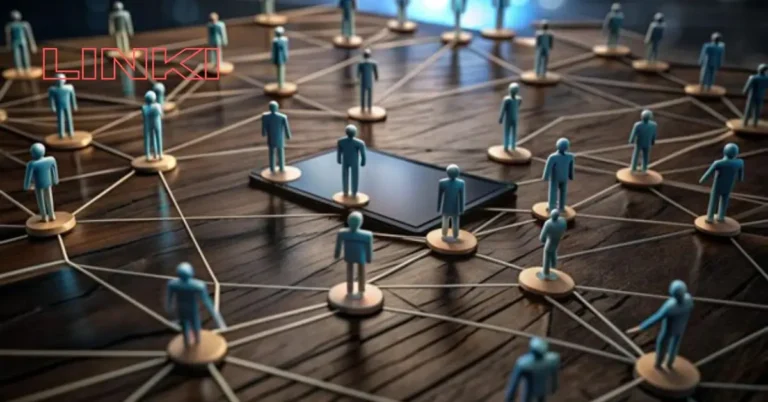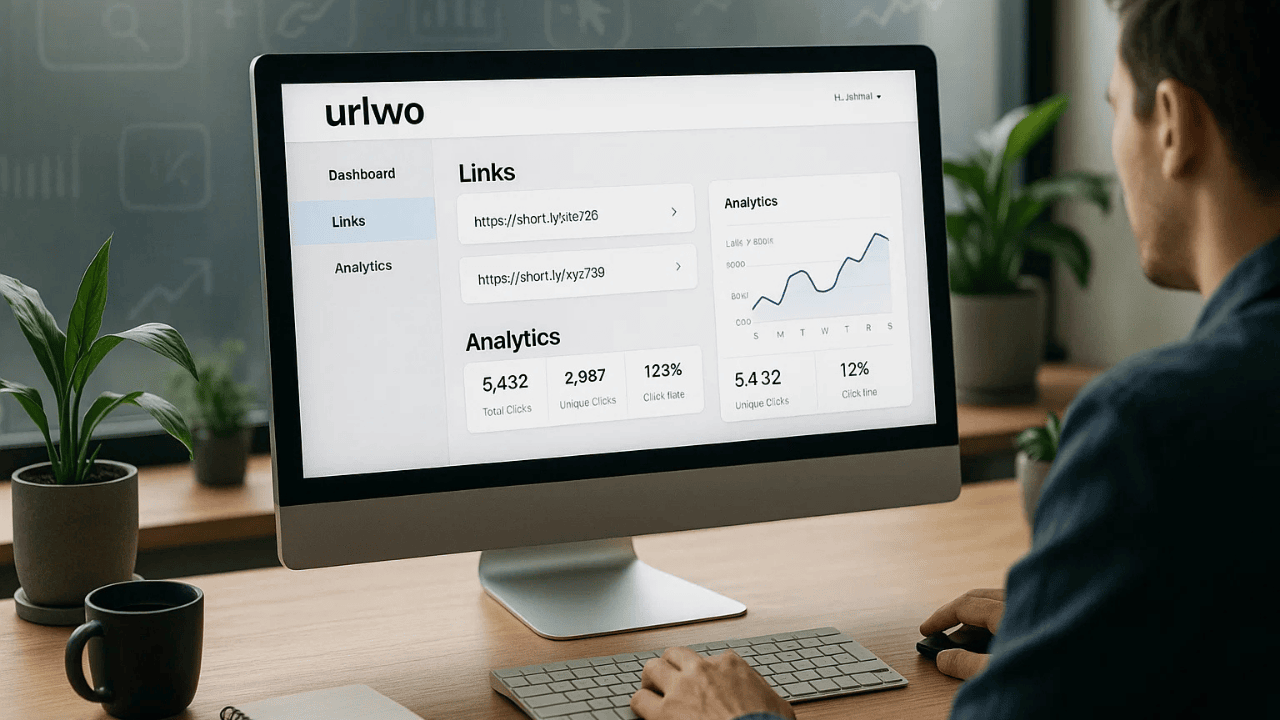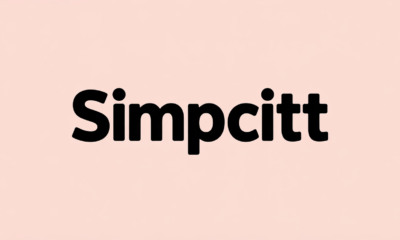Technology
Linki: Unveiling the Digital Connector in the Modern Age
Published
3 months agoon
By
Ninja
In the vast expanse of the digital world, connectivity is key. As we navigate through this intricate web of information, the concept of linking—referred to in some contexts as “linki”—has become a fundamental pillar of how we access, share, and interact with data online. The evolution of linki has not only shaped the internet as we know it but has also transformed the ways in which we communicate, conduct business, and engage with the world around us. This article delves into the multifaceted nature of linki, exploring its technical foundations, significance in web development, impact on cybersecurity, and its potential to influence the future of digital interactions.
Understanding the Concept of Linki
Linki, in its most basic form, refers to the process of connecting one piece of digital content to another. This connection is typically established through hyperlinks, which allow users to navigate from one webpage to another with a simple click. The concept of linking has been integral to the internet’s functionality since its inception, serving as the backbone of the World Wide Web.
The origins of linki can be traced back to the early days of hypertext, a system that allows text to be linked in a non-linear fashion. This concept was first proposed by Ted Nelson in the 1960s and later realized by Tim Berners-Lee, who is credited with inventing the World Wide Web in 1989. Berners-Lee’s creation of the Hypertext Transfer Protocol (HTTP) and the Hypertext Markup Language (HTML) laid the groundwork for the modern internet, where linki plays a crucial role in the seamless flow of information.
The Technical Foundation of Linki
At the heart of linki lies the hyperlink, a reference to data that users can follow by clicking on it. Hyperlinks are embedded within digital documents using HTML, which instructs browsers on how to display the linked content. These links can point to various types of digital content, including other webpages, documents, images, videos, or even specific sections within the same document.
The structure of a hyperlink is defined by the URL (Uniform Resource Locator), which serves as the address of the linked content. URLs are composed of several components, including the protocol (e.g., HTTP or HTTPS), the domain name, and the path to the specific resource (e.g., /page1.html). Together, these elements enable browsers to locate and retrieve the content associated with the link.
There are different types of links used in digital content:
- Internal Links: These links point to content within the same website. Internal linking is crucial for website navigation and SEO, as it helps search engines understand the structure of a website and the relationships between its pages.
- External Links: These links direct users to content on other websites. External linking is important for providing additional resources to users and establishing credibility through references to reputable sources.
- Backlinks: Also known as inbound links, backlinks are links from other websites that point to your content. Backlinks are a critical factor in SEO, as they signal to search engines that your content is valuable and trustworthy.
- Anchor Links: These links point to specific sections within a webpage. Anchor links are often used in long-form content to help users navigate directly to the sections they are interested in.
Linki in Web Development and SEO
In the realm of web development, linki is a foundational element that influences both the user experience and a website’s visibility on search engines. Effective linking strategies are essential for optimizing a website’s performance, ensuring that users can easily navigate through content and find the information they need.
Search Engine Optimization (SEO) is a critical area where linki plays a significant role. Search engines like Google use complex algorithms to evaluate the quality and relevance of links when determining the ranking of webpages in search results. A well-structured linking strategy can significantly enhance a website’s SEO, leading to higher visibility and increased traffic.
Strategies for Effective Link Building
- Internal Linking: Creating a robust internal linking structure helps search engines understand the hierarchy and importance of pages within a website. It also improves user experience by guiding visitors to related content.
- Acquiring Backlinks: Building high-quality backlinks from authoritative websites is one of the most effective ways to boost SEO. This can be achieved through content marketing, guest blogging, and outreach to influencers in the industry.
- Using Anchor Text Wisely: The text used for hyperlinks, known as anchor text, should be descriptive and relevant to the linked content. Search engines use anchor text as a signal to understand the context of the linked page.
- Monitoring Link Performance: Regularly analyzing the performance of links using tools like Google Analytics or specialized SEO software helps identify broken links, assess the quality of backlinks, and optimize the overall linking strategy.
Linki in Social Media and Online Marketing
Social media has revolutionized the way we communicate, share content, and engage with brands. In this digital ecosystem, linki serves as a powerful tool for driving traffic, increasing engagement, and promoting products or services.
Social media platforms like Facebook, Twitter, Instagram, and LinkedIn allow users to share links to content, enabling businesses to reach a wider audience. Linki in social media is not just about driving traffic to websites; it also plays a crucial role in building brand awareness and fostering community engagement.
Linki as a Marketing Tool
- Promoting Content: Businesses use social media to share links to blog posts, articles, videos, and other content, driving traffic to their websites and increasing visibility.
- Affiliate Marketing: Linki is a key component of affiliate marketing, where businesses reward affiliates for driving traffic or sales through unique tracking links.
- Call-to-Action Links: Marketers use linki to guide users towards specific actions, such as signing up for a newsletter, making a purchase, or downloading a resource.
- Analyzing Link Performance: Social media analytics tools provide insights into how links are performing, including click-through rates, engagement metrics, and conversion rates.
Case Studies of Successful Linki Campaigns
- BuzzFeed’s Viral Content Strategy: BuzzFeed effectively uses linki in its social media strategy to drive massive traffic to its website. By creating shareable content and strategically placing links, BuzzFeed has mastered the art of viral marketing.
- Amazon’s Affiliate Program: Amazon’s affiliate program relies heavily on linki, allowing affiliates to earn commissions by promoting products through unique tracking links. This program has contributed to Amazon’s dominance in the e-commerce industry.
- Red Bull’s Content Marketing: Red Bull’s linki strategy involves sharing engaging content across social media platforms, linking back to their website and online store. This approach has helped Red Bull build a strong brand presence and drive sales.
Linki and Cybersecurity
While linki is a powerful tool for connectivity, it also presents potential risks, particularly in the realm of cybersecurity. Malicious actors often exploit links to deceive users, leading to phishing attacks, malware infections, and data breaches.
Risks Associated with Malicious Linki
- Phishing: Cybercriminals use deceptive links to trick users into providing sensitive information, such as login credentials or financial data. These links often appear legitimate but lead to fraudulent websites.
- Malware Distribution: Malicious links can be used to distribute malware, infecting users’ devices with harmful software that can steal data, disrupt operations, or hold systems hostage.
- URL Spoofing: Attackers can create links that appear to be from a legitimate source but actually lead to a malicious site. This technique, known as URL spoofing, is commonly used in phishing attacks.
Protecting Users from Harmful Linki
- Education and Awareness: Users should be educated about the dangers of clicking on unknown or suspicious links. Organizations can implement training programs to raise awareness of common cyber threats.
- Using Secure Protocols: Websites should use HTTPS, a secure version of HTTP, to protect data transmitted between the user’s browser and the server. HTTPS encrypts the data, making it more difficult for attackers to intercept or alter it.
- Implementing URL Filtering: Organizations can use URL filtering to block access to known malicious websites. This technology scans URLs and compares them against a database of harmful sites, preventing users from clicking on dangerous links.
- Regular Security Audits: Conducting regular security audits helps identify vulnerabilities in linki practices and ensures that appropriate measures are in place to protect users.
The Role of Linki in Data Privacy and Protection
Linki also plays a crucial role in data privacy and protection. With the increasing amount of personal data being shared online, it’s essential to ensure that links are used responsibly. Organizations must adhere to data protection regulations, such as the General Data Protection Regulation (GDPR), and implement best practices for safeguarding user data.
Innovations and Future Trends in Linki
As technology continues to evolve, so too does the concept of linki. Emerging innovations are poised to transform the way we interact with digital content, leading to new possibilities and challenges.
Emerging Technologies Shaping the Future of Linki
- Artificial Intelligence (AI): AI is being integrated into linki to create more personalized and intelligent connections. For example, AI-powered algorithms can analyze user behavior to recommend relevant links, enhancing the user experience.
- Smart Links: Smart links are dynamic URLs that can change destination based on specific conditions, such as the user’s location, device, or language. These links offer a more tailored experience for users and can be used in marketing campaigns to increase engagement.
- VR and AR Links: As Virtual Reality (VR) and Augmented Reality (AR) technologies become more prevalent, linki is expected to extend into these immersive environments. Users will be able to interact with digital content in new ways, navigating through virtual spaces using links.
- Blockchain Technology: Blockchain has the potential to revolutionize linki by providing a decentralized and secure way to manage digital connections. This technology could be used to create immutable records of links, ensuring their integrity and preventing tampering.
Predicting the Next Generation of Linki
The future of linki is likely to be characterized by increased personalization, security, and interactivity. As AI, blockchain, and immersive technologies continue to advance, linki will become more intelligent, adaptable, and secure, offering new opportunities for innovation in digital communication.
Linki in the Context of Globalization
Linki has played a pivotal role in the globalization of information, commerce, and communication. By enabling instant access to content from around the world, linki has bridged geographical and cultural divides, fostering greater connectivity and collaboration.
How Linki is Bridging Geographical and Cultural Divides
- Global Communication: Linki has facilitated global communication by connecting people from different cultures and backgrounds. Social media platforms, forums, and messaging apps rely on linki to enable users to share information and engage in discussions across borders.
- E-Commerce and International Trade: Linki has revolutionized e-commerce by allowing businesses to reach global markets. Online stores use linki to connect customers with products and services, enabling international trade and expanding business opportunities.
- Access to Knowledge: Linki has democratized access to knowledge by making educational resources available to people around the world. Online courses, research papers, and digital libraries are just a click away, empowering individuals to learn and grow regardless of their location.
Challenges and Opportunities of Linki in a Globalized World
While linki has brought many benefits, it also presents challenges in a globalized world. Issues such as digital inequality, cultural differences, and language barriers can impact the effectiveness of linki in fostering global connectivity. However, these challenges also present opportunities for innovation, as businesses and organizations seek to create more inclusive and accessible digital experiences.
The Societal Impact of Linki
The impact of linki extends beyond the digital realm, influencing various aspects of society. From education to ethics, linki has transformed how we access information, interact with each other, and make decisions.
How Linki Has Transformed Access to Information and Knowledge
- Education and E-Learning: Linki has revolutionized education by enabling e-learning platforms and online courses. Students can access a wealth of knowledge from anywhere in the world, breaking down barriers to education and fostering lifelong learning.
- Research and Collaboration: Linki has facilitated research and collaboration among academics, scientists, and professionals. By linking to research papers, data sets, and collaborative tools, linki has accelerated the pace of discovery and innovation.
Ethical Considerations in the Use of Linki
- Accuracy and Credibility: The ease of linking to content online raises questions about the accuracy and credibility of information. Users must be critical of the sources they link to, ensuring that they promote reliable and trustworthy content.
- Privacy and Consent: Linki can also raise ethical concerns related to privacy and consent. For example, linking to personal information without consent can violate privacy rights. Organizations must be mindful of ethical considerations when using linki in digital content.
The Digital Divide: Access to Linki in Different Regions of the World
Despite the widespread availability of linki, there are still disparities in access to digital content across different regions. The digital divide refers to the gap between those who have access to the internet and digital technologies and those who do not. This divide can be influenced by factors such as economic status, education, and infrastructure. Efforts to bridge this gap are essential for ensuring that everyone can benefit from the opportunities that linki provides.
Conclusion
As we navigate the complexities of the digital age, linki remains a crucial connector, enabling us to access, share, and interact with content in ways that were once unimaginable. From its technical foundations to its societal impact, linki has shaped the modern internet and will continue to influence the future of digital communication.
The future of linke is bright, with innovations such as AI, blockchain, and immersive technologies poised to enhance the way we connect and interact online. However, with these advancements come new challenges and responsibilities. As we continue to embrace the power of linki, it is essential to prioritize security, privacy, and ethical considerations to ensure that this digital connector remains a force for good in our increasingly interconnected world.
In conclusion, linki is more than just a tool for navigating the web; it is a symbol of the connectivity and collaboration that define the digital age. As we move forward, let us harness the potential of linki to build a more inclusive, secure, and innovative digital future.
You may like
Technology
URLWO: Turning Links into Strategic Assets for the Modern Web
Published
17 hours agoon
December 15, 2025By
Ninja
In the digital age, the role of hyperlinks URLWO has evolved far beyond simple navigation tools. Links are now the backbone of the internet, connecting users to information, products, and services. However, while links have always been essential, their true potential as strategic assets has only recently begun to be fully realized. Enter URLWO—an innovative solution that’s transforming how businesses and individuals approach, manage, and optimize links.
URLWO is a platform that allows users to not just generate URLs, but to turn them into powerful, data-driven assets that can shape the digital landscape. It integrates link management, analytics, personalization, and optimization into one cohesive tool, giving users the ability to track and enhance every link they create or share.
Let’s explore how URLWO is revolutionizing the web, making links more than just pathways, but dynamic, measurable, and actionable components of modern digital strategy.
1. The Power of Links Beyond Navigation
At its core, a link is more than a simple connection between two web pages. In the context of URLWO, links become strategic assets—tools for engagement, tracking, and optimization. Whether you’re a marketer, business owner, content creator, or even a nonprofit organization, understanding how to leverage links effectively can unlock new opportunities for growth.
Traditional links are static—they simply point to a destination. However, with URLWO, links can be made dynamic, providing real-time data, tracking engagement, and offering personalized user experiences. URLWO enables links to act as bridges between the digital world and specific business objectives, from lead generation to brand awareness.
2. Advanced Analytics: Understanding Link Performance
One of the most significant benefits of URLWO is its robust analytics features. In a world where data drives decision-making, understanding how users interact with your links is crucial for optimizing digital campaigns and strategies.
URLWO offers advanced link tracking, including:
- Click-through rates (CTR): Measure how often your links are being clicked, which helps gauge the effectiveness of your campaigns.
- Geographical data: Track where your audience is located to tailor content and marketing efforts to specific regions.
- Device and platform breakdowns: See which devices or platforms (mobile, desktop, social media) are driving the most engagement, allowing you to optimize for those channels.
- User behavior: Gain insights into how users interact with the content they arrive at after clicking a link—whether they convert, abandon, or continue exploring other pages.
These detailed analytics allow businesses to optimize their link strategies, A/B test different campaigns, and make data-backed decisions that can significantly improve performance.
3. Personalization: Tailoring Links to Specific Audiences
Personalization has become a key factor in digital marketing and user experience. URLWO enhances link performance by offering personalized links based on user behavior, location, time of day, and more. This allows businesses to create unique experiences for different segments of their audience.
For example, an e-commerce website might want to direct users to different landing pages based on whether they’re visiting from an email campaign, a social media post, or a paid ad. URLWO allows businesses to easily customize their links so that visitors see relevant content, increasing the likelihood of conversion.
Beyond just content, personalization also extends to the link itself. URLWO can dynamically adjust the destination URL depending on the user’s previous interactions or preferences, making links more contextually relevant and engaging.
4. Optimizing User Journeys with Smart Links
Smart links are the next evolution of traditional hyperlinks, and URLWO enables users to create them with ease. These links adapt based on user context, such as where the link is being clicked from, what device the user is on, and even time-based factors like seasonal promotions.
For example, if a user clicks on a link from a promotional email, the link could take them directly to a tailored landing page with a special discount. If the same user clicks the link on a mobile device, it might redirect them to a mobile-optimized version of the same page. By understanding these behaviors, businesses can optimize the user journey, resulting in a more seamless experience and higher conversion rates.
5. Link Management: Streamlining Your Digital Ecosystem
As the web becomes more complex, managing large numbers of links—especially for businesses and large organizations—can become a challenge. URLWO simplifies this process by providing a centralized dashboard to manage all your links in one place.
Users can:
- Organize links by campaign, type, or project to easily track performance.
- Update links in bulk, making it easy to adjust campaign URLs or update offers without having to manually change every instance across websites, emails, or ads.
- Manage link expirations for time-sensitive promotions, ensuring that links become inactive after a specified date.
- Monitor broken links to prevent user frustration and lost opportunities, ensuring a seamless experience across your digital assets.
This level of control and visibility is invaluable for digital marketers, product managers, and anyone who needs to maintain a large digital ecosystem.
6. SEO and Link Building: Amplifying Organic Reach
Search Engine Optimization (SEO) remains a cornerstone of digital marketing. While URLWO is not an SEO tool in the traditional sense, it plays a significant role in the SEO process by helping users create clean, trackable, and optimized links that align with SEO best practices.
Key SEO benefits of URLWO include:
- Optimized URL structures for better crawling and indexing by search engines.
- UTM parameters and tracking codes that help you measure the performance of specific SEO-driven campaigns.
- Link tracking that provides insights into how your links are being shared across the web, helping identify influencers, partnerships, or high-performing backlinks.
These capabilities ensure that every link not only contributes to the immediate goal of conversion but also supports long-term SEO efforts, driving organic traffic to your site.
7. Security and Trust: Building Credibility with Branded Links
In the era of phishing and online fraud, trust is paramount. URLWO enhances security by allowing users to create branded, secure links. These custom links not only look more professional but also help to build credibility with your audience.
By customizing the URL (e.g., yourbrand.urlwo.com/offer), users are more likely to trust the link and click on it, knowing it comes from a legitimate source. Furthermore, URLWO offers advanced security features such as SSL encryption and the ability to set up custom redirects, ensuring that users’ data remains safe while browsing.
Conclusion: URLWO as the Future of Link Management
As the internet continues to evolve, the way we approach links must evolve as well. URLWO has reimagined the role of links in the modern web, turning them into strategic assets that are not just tools for navigation, but dynamic, data-driven elements of digital strategy. By offering advanced analytics, personalization, smart link management, and SEO enhancements, URLWO empowers businesses and individuals to optimize their online presence and connect with users in more meaningful ways.
Whether you’re looking to improve conversion rates, optimize digital campaigns, or streamline link management, URLWO offers a comprehensive solution that turns links into assets that drive value across your digital ecosystem. With URLWO, links are no longer just links—they’re opportunities to connect, engage, and grow in a rapidly changing digital landscape.
Technology
Ninawelshlass1: Welsh Nature Captured on Mobile
Published
2 weeks agoon
November 29, 2025By
Ninja
In an age where mobile phones Ninawelshlass1 are much more than communication tools, they’ve become powerful instruments for self-expression, creativity, and artistic exploration. One such creative force is Ninawelshlass1, a unique digital artist and photographer whose work brings the beauty of Welsh nature into sharp focus, all through the lens of a mobile phone camera. With each swipe and click, Ninawelshlass1 reveals the breathtaking landscapes of Wales — from its rugged coastlines to tranquil valleys — all captured in intimate, vivid detail.
The Art of Capturing Nature through a Mobile Lens
Mobile photography has grown leaps and bounds in recent years. With advanced smartphone cameras, photographers no longer need expensive equipment to capture stunning images. Instead, they rely on skill, perspective, and a keen eye for detail. Ninawelshlass1 is a perfect example of this modern-day photographer, using a mobile device to craft images that evoke emotion, bring people closer to nature, and showcase Wales’ unique landscapes.
What makes Ninawelshlass1’s work stand out is the personal touch and authenticity infused into each image. The landscapes she captures aren’t just scenes of nature — they feel like stories, moments frozen in time. The lush green hills, the rocky cliffs, the meandering rivers, and the sprawling coastlines of Wales all take on a life of their own. Through her mobile phone lens, the often-overlooked nuances of nature are illuminated, giving her audience a fresh perspective on the familiar.
Celebrating Welsh Nature
Wales is a country of contrasts. From the serene beauty of Snowdonia National Park to the wild, windswept beaches of Pembrokeshire, the Welsh landscape offers a rich canvas for any photographer. Ninawelshlass1 takes full advantage of this natural diversity, showcasing not just the sweeping vistas but the small details that often go unnoticed — the play of light and shadow on a forest floor, the texture of the gnarled branches of ancient trees, or the subtle hues of the sky as the day transitions into night.
Wales is home to a variety of ecosystems, and Ninawelshlass1’s photos often bring attention to the country’s diverse flora and fauna. By focusing on elements like wildflowers, birds in flight, or the mist that clings to mountain peaks, she helps raise awareness about the delicate balance of these environments. Many of her images seem to echo a deeper, underlying message: the need to preserve the natural world.
The Power of Simplicity
While many photographers gravitate toward complex compositions and sophisticated editing, Ninawelshlass1 often embraces simplicity. Her mobile photographs are direct and unpretentious, allowing the subject matter to speak for itself. Whether it’s the delicate curve of a lone tree in a foggy landscape or the striking colors of a sunset over the Irish Sea, the simplicity of her approach gives her work a timeless quality. It’s a reminder that sometimes, the most powerful images are those that don’t try too hard — they simply exist and invite the viewer to experience them.
Moreover, the use of a mobile phone for photography adds a layer of accessibility to her work. Mobile photography democratizes the art form, making it possible for anyone to engage with nature and share their perspectives with the world. This is something Ninawelshlass1 has tapped into beautifully. Her images are accessible not only in the technical sense but also in their emotional appeal. They capture a universal longing for connection to nature and a recognition of its ever-changing beauty.
The Digital Gallery: Sharing Nature with the World
In addition to creating a visually rich portfolio of Welsh nature, Ninawelshlass1 has embraced the power of social media to share her work. Platforms like Instagram and Twitter provide an avenue for her to showcase her images to a global audience. This accessibility helps foster a broader conversation about the importance of preserving natural spaces and promotes a sense of global stewardship.
Social media also allows viewers to interact with the artist, creating a sense of community around the shared appreciation of Welsh landscapes. Commenters from all corners of the globe praise the serenity and authenticity of the images, often sparking discussions about nature conservation, travel, and the personal connections people have with the natural world.
A Tribute to Wales and the Art of Mobile Photography
Through her mobile lens, Ninawelshlass1 not only celebrates the beauty of Wales but also demonstrates the evolving nature of photography itself. Mobile photography is no longer just a quick snap or casual shot — it has become a respected art form in its own right. Ninawelshlass1’s work proves that creativity doesn’t need to be constrained by expensive equipment or elaborate setups. With the right perspective, any device can capture the soul of nature.
As more people turn to their smartphones to explore the world around them, it’s inspiring to see how artists like Ninawelshlass1 are using this medium to share their vision. Whether you’re a seasoned photographer or a casual Instagram user, her work serves as a reminder that the world is full of beauty waiting to be captured — sometimes in the simplest, most unexpected ways.
Through her eyes and her mobile phone, we are invited to experience the wild, unspoiled beauty of Wales in a way that feels intimate, immediate, and deeply personal. In every image, we are reminded of nature’s quiet power and its ability to connect us all, no matter where we are.
Technology
Tbtv77: The Complete Guide to the Trending Digital Platform
Published
3 weeks agoon
November 25, 2025By
Ninja
In today’s fast-paced digital Tbtv77 landscape, new platforms are emerging almost daily, each vying for attention with unique features and services. Among the latest to capture the spotlight is Tbtv77, a digital platform that has gained significant traction across various sectors, particularly in the realm of entertainment and media consumption. Whether you’re an avid content consumer, a tech enthusiast, or someone just getting into the digital platform space, Tbtv77 offers an intriguing mix of entertainment and convenience.
This comprehensive guide will walk you through everything you need to know about Tbtv77 — from its core features and services to its growing popularity and how it stands out in an increasingly competitive digital world.
What is Tbtv77?
Tbtv77 is a cutting-edge digital platform that blends entertainment with user-centric features. It allows users to stream movies, TV shows, and live broadcasts, as well as access a variety of content related to gaming, news, and lifestyle. Think of it as a one-stop-shop for all things digital — offering a diverse catalog of media that appeals to a wide range of interests and tastes.
The platform positions itself as a versatile, user-friendly tool, aiming to deliver a seamless experience for both casual viewers and serious content consumers. It combines traditional media streaming with modern interactive features, making it an attractive option for a growing audience.
Key Features of Tbtv77
1. Wide Variety of Content
At the core of Tbtv77’s appeal is its expansive content library. The platform offers:
- Movies: A vast selection of popular films across genres, including the latest blockbusters, indie gems, and international cinema.
- TV Shows: From timeless classics to current TV hits, the platform covers a broad spectrum of television programming.
- Live Streaming: Tbtv77 provides users with access to live broadcasts, including sports events, news programs, and exclusive digital broadcasts.
- Gaming & Interactive Features: With a growing focus on gamified content and viewer interaction, Tbtv77 offers a unique blend of entertainment and engagement.
2. User-Friendly Interface
Tbtv77’s design focuses on user experience. It boasts an intuitive interface that makes navigation easy for people of all ages and tech-savviness. With personalized recommendations, smooth streaming, and quick access to content, the platform is built to cater to the needs of both casual browsers and serious media fans.
3. Subscription Tiers
While many digital platforms require users to pay hefty subscription fees, Tbtv77 offers a tiered subscription model. This flexibility allows users to choose plans that best suit their viewing habits and budgets:
- Free Access: Users can enjoy a limited selection of content without a subscription, supported by ads.
- Premium Plans: For those seeking full access, premium subscriptions unlock exclusive content, ad-free viewing, and higher-quality streaming options.
4. High-Quality Streaming
Tbtv77 delivers content in HD and 4K resolution, ensuring that users experience crisp, clear visuals on a variety of devices, from smartphones to smart TVs. The platform’s adaptive streaming technology adjusts the quality of the stream based on the user’s internet connection, ensuring smooth viewing even in less-than-ideal conditions.
5. Multi-Device Support
Gone are the days when you were tied to your laptop or TV to watch content. Tbtv77 is compatible with multiple devices, allowing users to stream on smartphones, tablets, desktop computers, and smart TVs. This flexibility gives viewers the freedom to consume content on the go or at home.
6. Exclusive Content and Originals
Much like other major streaming services, Tbtv77 has invested heavily in original content. From exclusive series to documentaries and specials, the platform is working to build its own content library that can’t be found anywhere else.
How Does Tbtv77 Stand Out in a Crowded Market?
Tbtv77 is entering an increasingly competitive space, with giants like Netflix, Hulu, Amazon Prime, and Disney+ dominating the digital streaming industry. However, several key differentiators help Tbtv77 carve out a niche for itself:
1. Localization and Global Appeal
Tbtv77 has managed to blend global content with localized offerings. The platform is available in multiple languages and regions, ensuring that users from around the world can access relevant content in their native language. Whether it’s Bollywood movies, European TV series, or American films, Tbtv77 offers a global experience with a personal touch.
2. Community-Driven Features
One of the standout features of Tbtv77 is its focus on community. Through interactive features such as live chats, polls, and content discussions, users are encouraged to engage with both the platform and each other. Tbtv77 is not just about passive consumption; it’s about building a network of like-minded viewers who can share their opinions and experiences.
3. Affordable Subscription Plans
While many major streaming services have raised their prices over the years, Tbtv77 remains committed to offering affordable options. With a competitive subscription model that caters to different budgets, the platform appeals to both casual viewers and serious binge-watchers.
4. Focus on Gamified Content
Tbtv77’s investment in gaming and interactive content adds a unique dimension to its offering. The platform hosts live gaming tournaments, provides real-time user participation in shows, and integrates gaming mechanics into its TV programs. This gamification approach has resonated with younger, tech-savvy audiences, setting Tbtv77 apart from traditional streaming services.
The Popularity Surge of Tbtv77
Since its launch, Tbtv77 has witnessed a rapid increase in subscribers, particularly among younger generations. Its seamless combination of entertainment, community engagement, and modern streaming features has struck a chord with viewers. Word-of-mouth referrals, viral social media trends, and exclusive content offerings have also contributed to its growing user base.
In an era where content creators and viewers are always looking for new ways to engage with digital media, Tbtv77 has successfully positioned itself as a forward-thinking platform that meets the evolving needs of a diverse audience.
How to Get Started on Tbtv77
Getting started on Tbtv77 is simple:
- Sign Up: Create an account on the platform using your email or social media accounts.
- Choose a Subscription Plan: Select the free or premium subscription plan that fits your viewing habits.
- Browse Content: Use the intuitive search bar or browse categories to find your favorite movies, shows, and live broadcasts.
- Start Watching: Enjoy seamless streaming on your preferred device — whether you’re on your phone, laptop, or smart TV.
Conclusion
Tbtv77 has quickly become a popular digital platform, thanks to its expansive content library, interactive features, and user-friendly interface. With a growing focus on gaming, community, and original content, it’s carving out a niche in the highly competitive digital entertainment market. Whether you’re a casual viewer or a media enthusiast, Tbtv77 has something for everyone — and its continued innovation makes it a platform worth watching.
Trending
-

 Blog7 months ago
Blog7 months agoAbraham Quiros Villalba: Complete Information
-

 Entertainment7 months ago
Entertainment7 months agoهنتاوي.com: Your Gateway to Arabic-Subtitled Anime
-

 News7 months ago
News7 months agoDGMNews.com: A Comprehensive Overview of the Emerging Digital News Platform
-

 Blog7 months ago
Blog7 months agoSimpcitt: A New-Age Urban Marvel or a Digital Mirage?
-

 Blog7 months ago
Blog7 months agoThe Historical and Cultural Significance of Tonghou: A Journey Through Time
-

 Technology7 months ago
Technology7 months agoXlecz: Exploring the Potential of a Revolutionary New Concept
-

 Blog7 months ago
Blog7 months agoUnveiling The Life And Journey Of Keilani Bautista
-

 Technology7 months ago
Technology7 months agoFintechZoom .io: 27 Reasons Why This Fintech News Platform is Revolutionizing Global Finance
